Common Hops Plant
- March 25, 2024
- 0 comment
Humulus lupulus, commonly known as Common Hops Plant, is a perennial plant known for its climbing, vine-like growth habit, which is part of the Cannabaceae family. It is most famously cultivated for the brewing of beer, as the plant’s cone-shaped flowers, or hop cones, are prized for their bittering, flavoring, and stability properties. Common Hops Plant have been an essential ingredient in beer production for centuries, with their use dating back to the early Middle Ages.
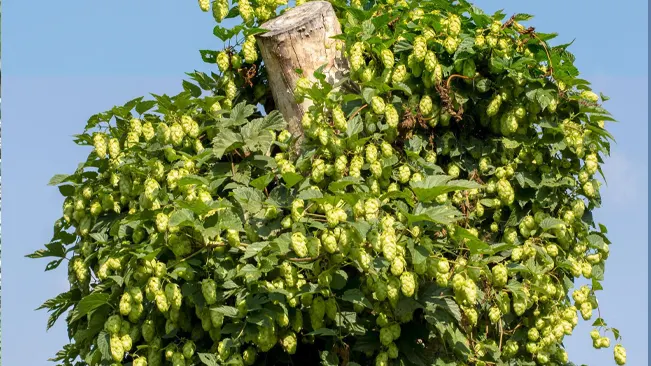
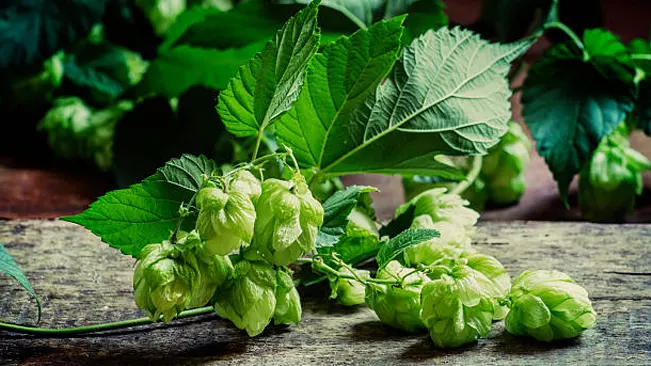
Beyond their critical role in the brewing industry, Common Hops Plant possess qualities that have found applications in various cultural and medicinal contexts. The plant is also valued for its aromatic oils and has been used historically in herbal medicine, primarily for its sedative and antibacterial effects. In the garden, Common Hops Plant can be grown for decorative purposes, with their lush foliage and distinct cones adding a rustic charm to trellises and arbors.
Characteristics of Common Hops Plant
| Characteristics | Description |
| Scientific Name | Humulus lupulus |
| Common Names | Hops, Common Hops |
| Family | Cannabaceae Family |
| Native Region | Native to Europe, Western Asia, and North America. |
| Plant Type | Perennial, climbing |
| Size | Can grow 15-25 feet (4.5-7.6 meters) in a single growing season. |
| Leaves | Heart-shaped, lobed leaves with a serrated edge |
| Flowers | Yellow-green cone-shaped flowers, known as hop cones, used in brewing beer |
| Propagation | Typically propagated by rhizome cuttings. |
| Drought Tolerance | Moderately drought-tolerant once established. |
| Cultural Uses | Primarily used in brewing beer for flavoring and preservation; also used in herbal medicine. |
| Ecological Role | Provides shelter and habitat for various species of insects and wildlife. |
| Notable Species | The variety ‘Cascade’ favored in the brewing industry for its distinct aromatic profile. |
| Hardiness Zones | Common hops plant are hardy in USDA zones 3 through 8, thriving in a variety of climates and conditions. |
| Growth Rate | Fast-growing once established, especially during the growing season. |
| Lifespan | Can live and produce for several years, with some hop plants living up to 10 years or more. |
Botanical Beauty of “Common Hops Plant”
The Common Hops Plant, Humulus lupulus, presents a unique botanical beauty with its vigorous climbing habit that can swiftly cover trellises and walls, creating a lush green backdrop. Its cascading vines bear distinctive cone-shaped flowers known as hops, which are both aesthetically pleasing and aromatically potent. This vigorous grower not only serves as a functional crop but also as an ornamental plant that adds a rustic charm to any garden space.

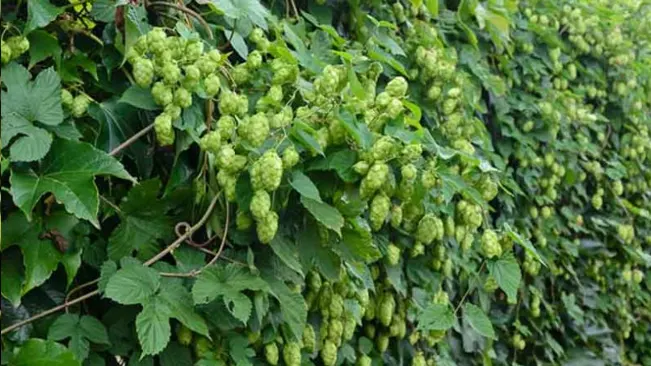
Woodland Elegance
In woodland settings, the Common Hops Plant contributes an element of elegance, its twining vines embracing the trunks and branches of trees, melding seamlessly with the natural landscape. The delicate, yet intricate structure of the hop cones offers a textural contrast to the woodland undergrowth.
Ecological Importance
Ecologically, Common Hops Plant play a supportive role as their dense foliage provides shelter and habitat for various wildlife species. The hop cones are also a source of food for some birds and small mammals, integrating the plant into the local food web.

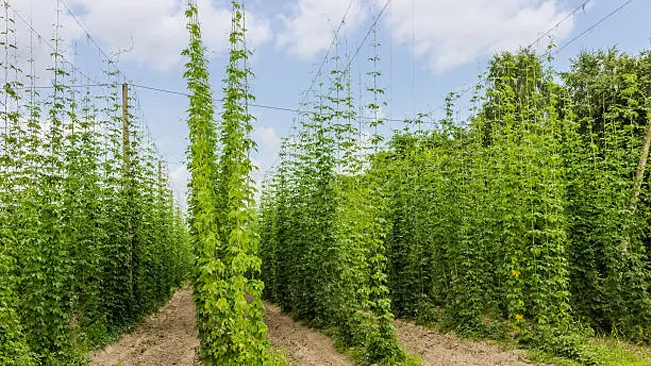
Cultivation and Conservation
The cultivation of Common Hops Plant for brewing has a long history, with careful selection and breeding leading to a diversity of varieties, each with its own flavor profile. Conservation efforts for hops focus on preserving genetic diversity and promoting sustainable agricultural practices that ensure the longevity and environmental compatibility of hop farming.
Fragrance
The Common Hops Plant, known scientifically as Humulus lupulus, is renowned for its distinct fragrance, which is rich and complex, offering notes that range from herbal to woody, sometimes with a hint of spice. The aroma is most concentrated in the lupulin glands of the female flowers, or hop cones, which contain the essential oils and resins responsible for the scent. Brewers highly value these fragrant compounds, as they impart the characteristic bitterness and flavor nuances to beer and ale.
During the late summer and early autumn, Common Hops Plant gardens become aromatic havens, as the ripening hop cones release their potent oils into the air. The fragrance of hops is not just limited to their fresh form; when dried, the cones continue to emit a strong, pleasant aroma, making them a favorite for use in various scented products. The aromatic qualities of hops have also been traditionally used in sleep pillows, where their scent is said to have calming and sleep-inducing properties.
In the world of perfumery, Common Hops Plant extract can be found as a component in certain fragrances, bringing an earthy and subtly sweet undertone to the composition. The scent of hops is sometimes described as having a calming effect, and thus, it is incorporated into some aromatherapy practices. Furthermore, the essential oils derived from hops are utilized in the production of soaps, lotions, and candles, prized for their unique scent profile.
Soil Stabilization
Common Hops Plant, with their vigorous root systems and fast-growing nature, are excellent plants for soil stabilization. The roots of the Common Hop Plant help to bind the soil, preventing erosion, which is particularly beneficial on sloped terrains and banks of water bodies. These plants are also used in permaculture and regenerative agriculture practices for their ability to improve soil structure and health.
As Common Hops Plants grow, they create a dense canopy of foliage that shades the ground, reducing the impact of heavy rains on the soil surface, which further helps in minimizing soil displacement. Additionally, the natural decomposition of hop leaves and vines at the end of the growing season adds organic matter to the soil, enhancing its fertility. The mulching effect of the fallen plant matter also helps in conserving soil moisture and suppressing weed growth.
Planting Common Hops Plant alongside rivers and in areas prone to soil erosion can serve as a bio-engineering solution to protect the soil. The plant’s climbing habit means it can also be used to cover unsightly structures while stabilizing the ground around them. Furthermore, as perennial plants, hops contribute to long-term soil stability, as they do not require annual replanting, which can disturb the soil structure.
Common Uses
The most common use of Common Hops Plant is in the brewing industry, where they are an indispensable ingredient in beer production. Common Hops Plant provide the bitterness needed to balance the sweetness of the malt, as well as contribute to the flavor, aroma, and stability of the beer. They are available in various forms, such as whole cones, pellets, and extracts, to suit different brewing processes and styles.
Beyond brewing, Common Hops Plant have found their way into culinary applications, imparting a unique bitterness and flavor to dishes. They are used sparingly due to their strong taste, with young hop shoots sometimes being eaten as a delicacy, similar to asparagus. Hops are also occasionally used to flavor herbal teas, offering potential digestive benefits.
In herbal medicine, Common Hops Plant have a longstanding history of use. The sedative properties of hops have been tapped for promoting sleep, typically by filling sleep pillows with dried hop cones. They have also been used to make tinctures and infusions that are said to help with anxiety and sleep disorders.
Benefits
Common Hops Plant offer several health benefits, which have been recognized in traditional medicine for their sedative and calming effects. They contain compounds like humulone and lupulone, which have been studied for their potential antibacterial properties. The plant’s use in sleep aids is attributed to the presence of methylbutenol, a compound known for its ability to induce sleep.
Environmentally, Common Hops Plant contribute to biodiversity as their cultivation supports a variety of insects and provides habitats for beneficial predators, such as spiders and ladybugs. This interaction can aid in the natural control of pests in agricultural settings, reducing the need for chemical insecticides. The dense foliage of hop plants also serves as a natural shelter for wildlife, integrating agricultural landscapes with local ecosystems.
The cultivation of Common Hops Plant is beneficial for the agriculture industry as it diversifies crop options and can be a profitable crop for farmers due to the high demand from the brewing industry. Hops farming supports rural economies, especially in traditional hop-growing regions. Sustainable farming practices involving hops can lead to the preservation of agricultural land and the conservation of water resources.
Different Species
Humulus lupulus ‘Cascade’
A cornerstone in American brewing, Cascade hops are celebrated for their floral and citrusy aroma, with distinct notes of grapefruit, used extensively in Pale Ales and IPAs.
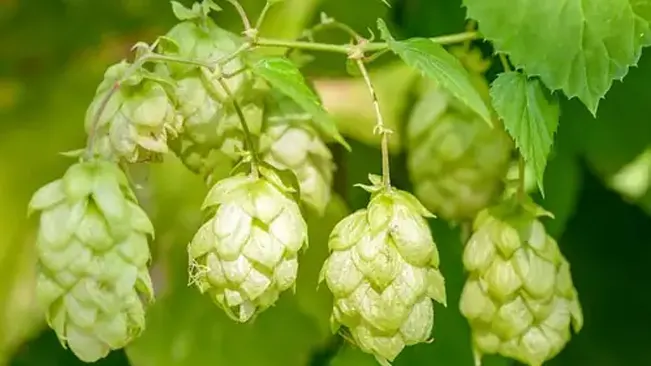
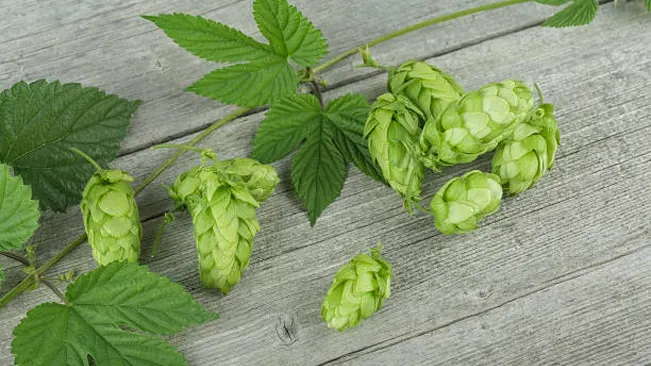
Humulus lupulus ‘Centennial’
Known as the ‘Super Cascade,’ Centennial hops offer a higher alpha acid content with a complex profile of floral, citrus, and earthy tones, making them versatile for various beer styles.
Humulus lupulus ‘Chinook’
Chinook hops bring a robust piney and spicy aroma with a subtle hint of grapefruit, highly valued for their dual-purpose use in bittering and aroma contributions in brewing.
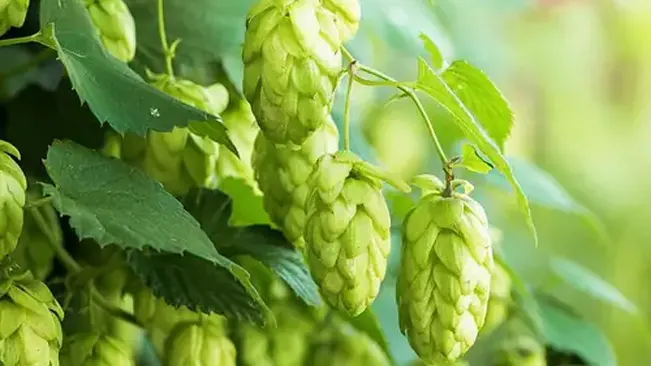
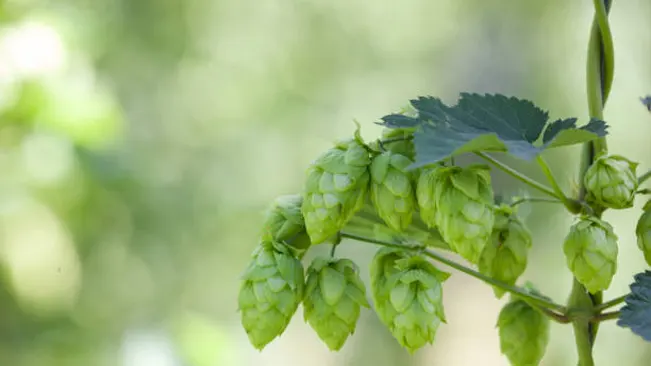
Humulus lupulus ‘Fuggle’
Fuggle hops are a classic English variety, offering a mild, earthy, and slightly woody aroma, perfect for traditional English-style ales, porters, and mild bitters.
Humulus lupulus ‘Goldings’
Goldings hops are a quintessential English hop, famed for their sweet, floral, and slightly fruity aroma, essential in brewing English bitters, pale ales, and stouts.
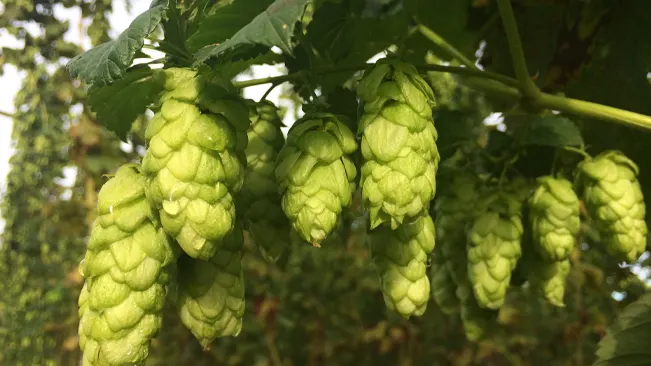
Frequently Asked Questions (FAQs)
- What are common hops plant used for?
Common hops are primarily used in brewing beer for flavor, aroma, and stability. - How do you grow common hops plant?
Grow in well-drained soil, full sun, and provide a trellis or support for climbing. - Can hops be grown in containers?
Yes, they can be grown in large containers but require ample space for roots. - When do common hops plant typically harvest?
Hops are usually harvested late summer to early fall when cones are aromatic and slightly dry. - Are common hops plant perennial or annual plants?
Hops are perennial plants, coming back year after year. - How tall can common hops plant grow?
They can reach heights of 15-25 feet (4.5-7.6 meters) in a single season. - Do hops need a lot of water?
Hops need regular watering, especially during dry periods, but don’t like to be waterlogged. - Can you use fresh hops for brewing?
Yes, fresh (or “wet”) hops can be used but are less common due to their limited shelf life. - Are hops plants male or female?
Hops plants are dioecious, meaning there are separate male and female plants, but only the female plants produce the hop cones used in brewing. - How do you dry common hops plant for storage?
Dry them in a warm, well-ventilated area until the cones are papery and the inner stem is brittle.





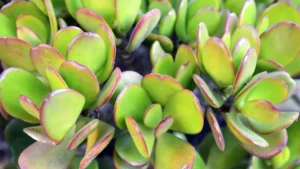

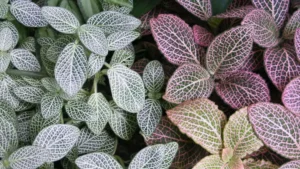
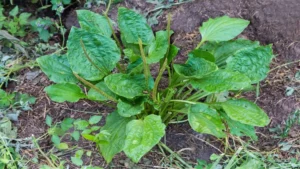





Leave your comment